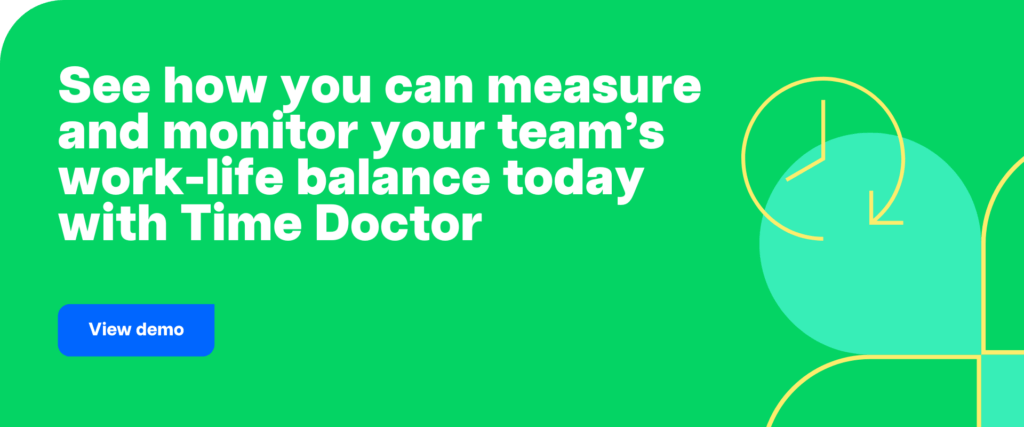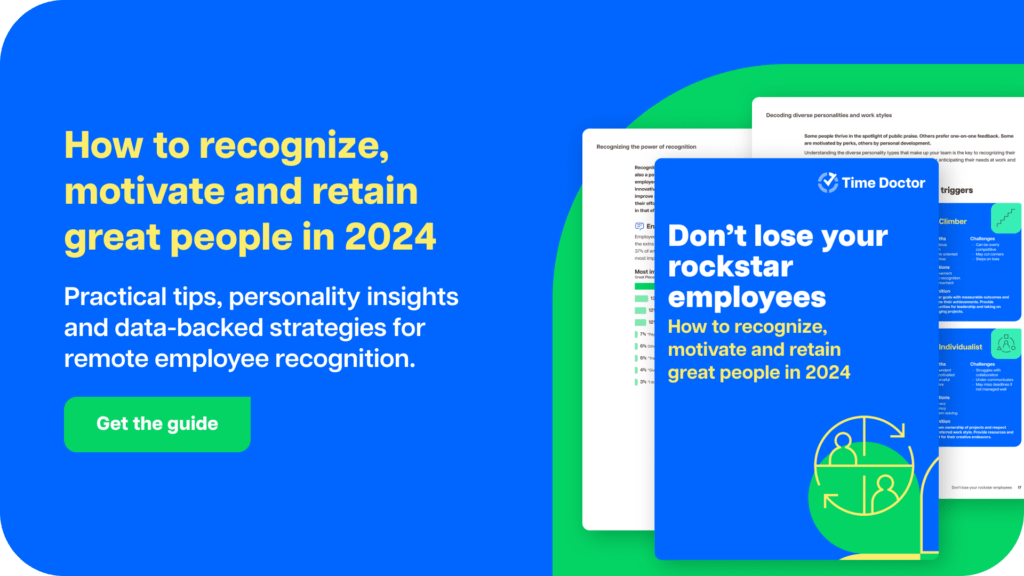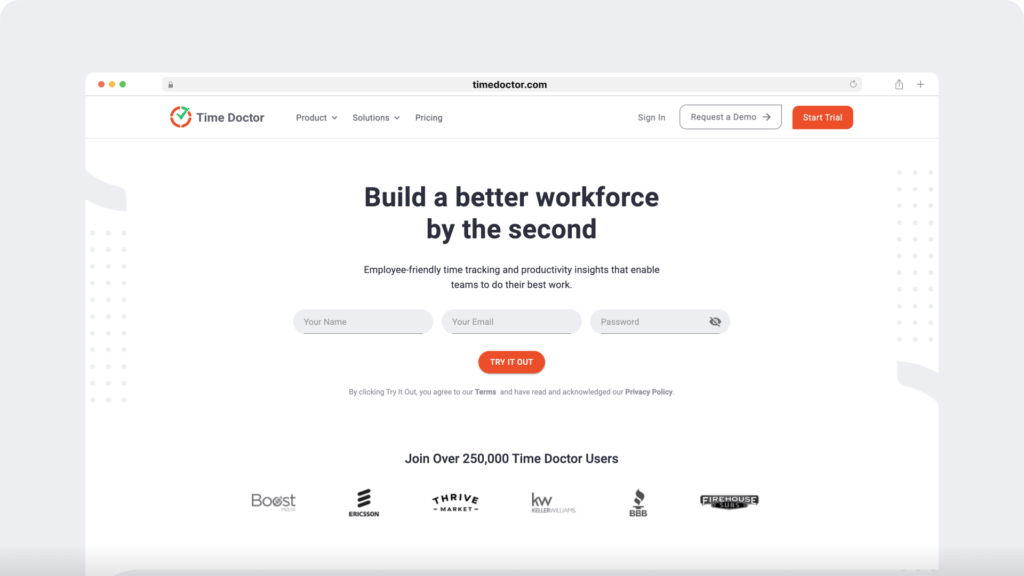17
When staff really feel valued and acknowledged as people, they act in ways in which profit colleagues, managers and the group. They’re additionally happier, more healthy and extra engaged.
Gallup and Workhuman studied 1000’s of staff throughout a number of nations to gauge the facility of recognition. They discovered that when recognition efforts resonate, staff are:
- 73% much less prone to expertise burnout
- 56% much less prone to be in search of one other job
- 5x as prone to really feel linked to their tradition
- 44% extra prone to be “thriving” of their life
Briefly, recognition is a strong motivator and antidote to worker burnout.
So, it’s worrying that the identical research discovered that 81% of leaders don’t make recognition a strategic precedence.
This isn’t a one-off consequence.
Based on Gallup’s newest worker engagement information, simply 30% of US staff say they obtain recognition each week.
That’s three proportion factors decrease than on the top of the pandemic. It additionally tracks with worker engagement, general satisfaction at work, connection to function, dedication to high quality and several other different indicators, which all dipped since 2020.
It’s no surprise that eight in 10 staff (82%) repeatedly expertise burnout signs. Recognition impacts an worker’s sense of function, which considerably impacts their well-being at work.
To mitigate the very actual dangers of worker burnout, recognition should turn into a strategic precedence. Placing recognition on everybody’s radar – together with frontline staff, staff leaders and organizational managers – begins with understanding that new methods of working are difficult old-school recognition methods.

Desk of Contents
The challenges of recognizing distant staff
The accelerated transition to distant and hybrid work has introduced many advantages for workers and corporations. Nonetheless, the identical flexibility that pulls staff could make it troublesome for managers to note and acknowledge their achievements.
With out in-person interactions, staff can really feel disconnected from tradition, colleagues, and supervisors. Sadly, this sense is usually legitimate. One of the generally cited challenges of managing distant staff is a lack of visibility over what they do.
Communication boundaries amplify disconnection. The times of spontaneous conversations, hallway congratulations, or overhearing reward in an open workplace are gone. Translating these efforts to digital channels will help, although there’s a danger that recognition comes throughout as ingenuine.
All these components imply that not solely the quiet achievers but additionally the extroverts danger turning into invisible.
With out intentional and sustained motion on worker recognition, organizations will lose the folks they should construct resilience for the long run.
Amid a world expertise scarcity, we should guarantee good persons are cared for. Learn to retain rockstar staff and construct a future-ready workforce with our newest free information.

What recognition appears to be like like in hybrid and distant workforces
Round two-thirds of managers (61%) and top-level leaders (67%) say they dole out recognition at the very least weekly. This appears at odds with the speed at which staff say they obtain optimistic suggestions.
There’s an excellent purpose.
It’s doable that the worker doesn’t acknowledge they’re receiving recognition. This isn’t the supervisor’s fault, however it’s their accountability, at the very least partly.
Conventional recognition methods don’t work in distant workplaces*. Group leaders should discover new methods to point out their appreciation, they usually should do it typically.
Take into consideration greater than cash
Whereas monetary rewards have their place, and everybody must be paid pretty, recognition encompasses rather more than cash.
A number of latest research (and plenty of older ones) counsel that significant symbolic gestures are more practical motivators than financial incentives.
This comes again to the core function of worker recognition.
Individuals wish to really feel linked to work that has worth. So, for distant staff who could really feel disconnected from firm tradition, gestures that tackle their want for belonging and achievement may be considerably extra motivating.
Bodily to digital: *Some recognition methods do work remotely
Some conventional recognition strategies may be tailored for distant groups.
For instance, the equal of bringing donuts to the workplace might be sending reward playing cards for espresso or lunch to distant staff after a profitable mission.
Equally, public recognition may be tailored to digital environments by way of shout-outs in video conferences or recognition posts on company-wide platforms. A supervisor may ship a customized e mail thanking an worker as an alternative of leaving a word on their desk.
Transitioning from bodily to digital recognition is way from unimaginable. It merely requires creativity.
Peer-to-peer recognition is a ‘rising tide’ for distant groups
Recognition from colleagues not solely fosters a optimistic work atmosphere but additionally helps to construct sturdy connections which are essential for distant groups.
By facilitating a tradition the place everybody can nominate and have fun one another’s achievements, you create a extra cohesive and supportive distant workforce.
Peer-to-peer worker recognition may be spontaneous and easy. A shout-out on Slack or a fast e mail thanking the staff for his or her efforts on a mission.
You may additionally think about investing in a formalized peer recognition program to ingrain it within the firm’s tradition.
For instance, the German utility firm E.On encourages staff to ship thank-you notes by way of the Buzz worker engagement program. This low-cost, low-effort worker recognition initiative resulted in 13% extra staff feeling valued, an 18% higher understanding of the corporate’s imaginative and prescient, and eight% increased engagement.
New options for distributed groups
Within the previous world of labor, financial incentives, public shout-outs and free lunches have been broadly accepted as the way in which to acknowledge good work.
As you’ll be able to see from the three tenets of distant worker recognition above – greater than cash, remote-friendly, and peer-to-peer – new work fashions require new recognition methods.
Listed here are a couple of concepts to get you began.
Encourage giving
- Implement platforms permitting digital shout-outs, badges, or factors for colleagues
- Create a communication channel devoted to acknowledging peer achievements
- Arrange a digital “kudos” board for posting gratitude messages and acknowledgments
- Encourage worker participation in nominating friends for awards or recognition packages
Present development alternatives
- Supply entry to on-line programs or certifications to acknowledge an worker’s distinctive expertise
- Create a mentorship program to assist bold staff develop new expertise or advance their careers
- Sponsor attendance at digital conferences or workshops
Recognize informally
- Supply off-the-cuff reward in on-line conferences or throughout video conferences
- Ship fast emails or messages highlighting particular contributions
- Use options on video conferencing platforms for fast, casual recognition
Manage digital actions
- Host digital team-building occasions, like on-line video games or trivia quizzes
- Prepare digital espresso breaks or lunch hours to foster informal interactions
- Host a hackathon to encourage inventive problem-solving and innovation
Make a private connection
- Attain out personally with a message, telephone name or thank-you word
- Schedule digital espresso chats with distant staff to get to know them higher
- Coordinate a staff lunch (e.g. with a meals supply service) to encourage informal dialog and connection
Publicize accomplishments
- Spotlight worker achievements within the firm publication or intranet
- Share worker success tales on the corporate’s social media platforms
- Create a “Wall of Fame” in your firm’s digital workspace
Give them time
- Supply extra paid time without work or psychological well being days to stop burnout
- Supply versatile work preparations to construct belief and empower distant staff with management over their schedules
- Encourage staff to make the most of paid time without work and discourage checking emails or attending conferences whereas on trip
- Set up “no assembly” days or instances when staff can focus with out interruptions, acknowledging their want for devoted work time
Recognition takes many varieties
You is likely to be these concepts and pondering some aren’t recognizable as recognition.
“Recognition” and “reward” are completely different. Recognition is about acknowledging your staff’s contributions by way of private, particular and frequent suggestions, whereas a reward is a one-time perk for going the additional mile.
Recognition reinforces belonging – the connection to tradition that each human wants. Rewards reinforce distinctive effort, which provides a pleasant feeling however doesn’t do a lot for sustained motivation.
Often, recognition comes within the type of rewards. Nonetheless, actually efficient recognition methods are ingrained in a tradition the place folks really feel valued and appreciated.
Learn extra: Making a tradition of recognition to spice up worker engagement.
Suggestions for efficient worker recognition in distant and hybrid workplaces
As an organizational chief dealing with a world expertise scarcity and evolving worker preferences, significant recognition is without doubt one of the handiest instruments for motivating and retaining nice folks.
Be genuine
A real shout-out is extra impactful than a perfunctory gold star. Deal with points of an worker’s efficiency which have made a real and measurable distinction.
Workforce analytics helps right here. By offering real-time information and long-term productiveness traits, workforce analytics removes biases (like character and proximity) to point out you the way folks actually work.
Get particular
Gallup’s analysis discovered that 72% of staff with nice recognition experiences say their leaders acknowledge the “little issues.” Tie recognition to a particular accomplishment to point out you see particular person contributions, not simply generic efficiency.
Time it proper
The earlier and extra incessantly you acknowledge an achievement, the extra impactful will probably be. Encourage colleagues to exhibit recognition on daily basis or each week and develop a proper system to scale back lag time.
Make it private
Optimistic suggestions from key stakeholders may be notably motivating for social (a.ok.a. extroverted) staff. Take into account whose recognition means essentially the most to an worker: their supervisor, an govt, or a colleague.
Go public
Non-public suggestions is suitable generally, however public recognition can encourage your entire staff. It may really feel extra impactful for the recipient and enhance general morale. Nonetheless, it’s price contemplating the adverse alerts that public reward can ship and adapting your message to keep away from favoritism or tokenism.
Particulars matter
Workers can inform the distinction between a rushed gesture and real appreciation. For instance, a handwritten thank-you word signed by a supervisor and mailed house is extra significant than a generic e mail.
Begin small
Recognition doesn’t must be costly or extravagant to counteract worker burnout and encourage distant staff. Easy gestures like notes from a colleague or a fast shout-out in a gathering may be efficient (and cost-efficient) methods to point out appreciation.
We acknowledge the challenges of managing distant staff
Constructing a tradition of recognition is important for a thriving distant workforce. Nonetheless, it may be difficult to trace particular person contributions, discover the appropriate solution to acknowledge them, and stop worker burnout.
Time Physician’s industry-leading workforce analytics instruments provide help to clear up all three issues concurrently.
Monitor worker contributions
Actual-time monitoring and detailed reporting give staff leaders a transparent, goal view of every staff member’s contributions and work patterns.
This data-driven perception permits for recognizing the amount, high quality and effectivity of labor being accomplished.
You’ll be able to see which staff members repeatedly go the additional mile, clear up issues effectively or exhibit distinctive teamwork, just by analyzing the workforce information at your fingertips.
Stage the taking part in subject
When staff know their contributions are seen and measured precisely alongside their friends, it fosters a tradition of collaboration slightly than individualism. As a bonus, company-wide workforce analytics additionally minimizes the danger of recognition being misinterpreted as favoritism.
Clear exercise monitoring additionally fosters accountability and possession amongst staff. This transparency is essential in these situations the place “recognition” means recognizing an worker’s want for autonomy and suppleness.
Steadiness effort and wellbeing
By monitoring productiveness and engagement alerts, you’ll be able to see whether or not your efforts to encourage your staff are having the specified affect. And by monitoring work-life steadiness alerts, you’ll be able to belief that these efforts aren’t compromising worker wellbeing.
Time Physician’s work-life steadiness instruments help you monitor metrics like additional time, lengthy days and weekend work to intervene earlier than worker burnout turns into a problem.
These options tackle a problem with managing distant staff that tends to go unrecognized: visibility.
Time Physician helps you foster a tradition of recognition

Worker recognition is a extremely potent and underutilized technique for motivating and energizing the workforce of the long run.
Corporations that get worker recognition proper will get pleasure from the advantages of an engaged, motivated, collaborative and constant workforce. Corporations that miss the mark will see worker burnout rise and good folks stroll.
However there’s a catch. Conventional recognition methods don’t at all times translate to digital environments. For anybody managing distant staff, meaning rethinking recognition to develop individually tailor-made methods.
Right here at Time Physician, we’re no strangers to the brand new methods wanted to handle distant staff, together with recognition. If you happen to’re a pacesetter in a transitioning group, we’ll provide help to reframe recognition to spice up motivation and struggle worker burnout.
How? By way of workforce analytics.
Dependable workday information is your window into recognizing exhausting work, assessing staff’ wants, and measuring the output of motivational methods. Get began at this time with a free trial or view a demo to see Time Physician’s options in motion and get customized suggestions for utilizing office analytics to reinforce worker recognition.

Carlo Borja is the Content material Advertising and marketing Supervisor of Time Physician, a workforce analytics software program for distributed groups. He’s a distant work advocate, a father and a espresso junkie.
